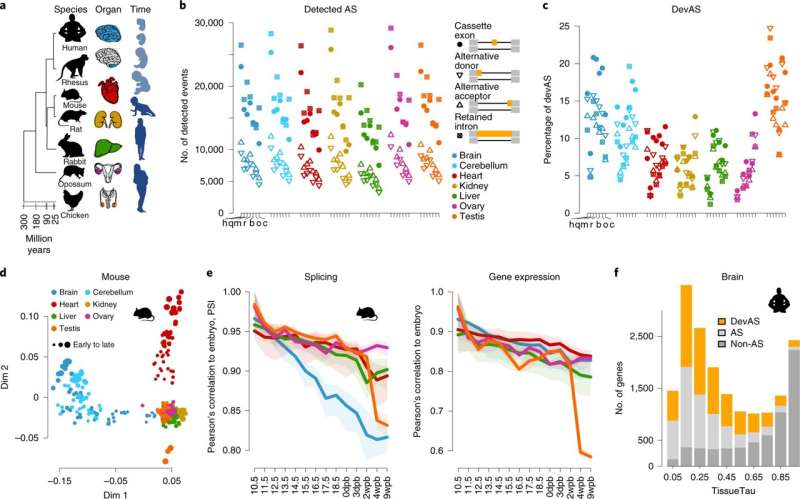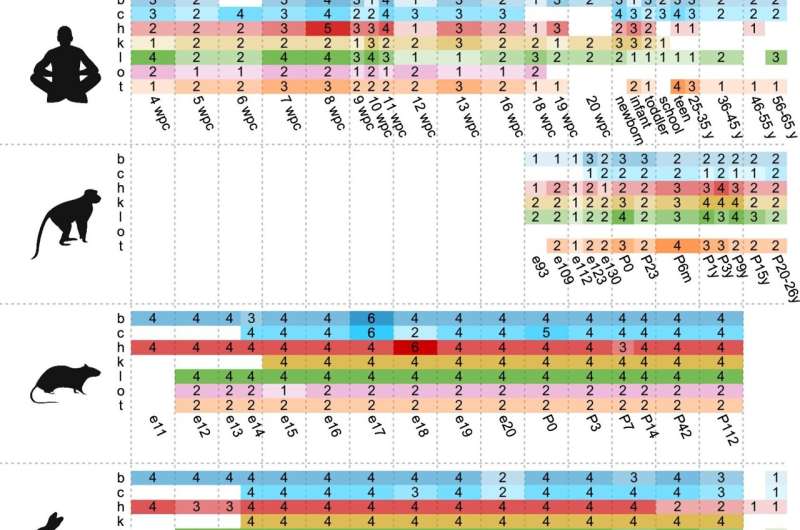The role of RNA maturation for organ development in mammals

Researchers from Russia and Germany have created a genome-wide atlas of developmental alternative splicing changes of seven organs in six mammal species and chicken.
The research was published in the journal Nature Genetics.
As the protein encoding RNA matures in eukaryotes, it gets spliced, with some parts cut out and the remaining fragments stitched together. Alternative splicing means that the same RNA fragment can either be cut out from or kept within the mature RNA. In this case, one gene can encode several RNAs and, therefore, several proteins. Although alternative splicing is known to be essential for many tissues to develop and function properly and its various disorders may cause health problems, its function and regulation on genome-wide level are still very poorly understood. Comparative research on alternative splicing in different species has been performed mostly on adult organisms, but scientists believe that alternative splicing plays a very important role in an organism's development.
Professor Philipp Khaitovich and research scientist Pavel Mazin of the Skoltech Center for Neurobiology and Brain Restoration (CNBR) and their colleagues from the University of Heidelberg (Germany) decided to fill this gap. They used the RNA sequencing technology to create an alternative splicing atlas for seven different organs of six species of mammals and one bird species at different stages of their development, from the beginning of organogenesis to puberty. The team demonstrated the fundamental importance of alternative splicing in the formation of organs such as the brain, heart, and testes, whereas for the liver, kidneys, and ovaries alternative splicing revealed much weaker changes which, in addition, turned out to be very similar for all the studied species and were detected primarily in the genes expressed at the later stages of development and in several tissues simultaneously. This suggests that alternative splicing is needed mainly for creating tissue-specific protein isoforms that work in various tissues.

"Alternative splicing is difficult to handle due to high biological and experimental noise. Another challenge in this project was an enormous amount of data: we had to process about 2,000 samples totaling several terabytes. Yet, it was all the more exciting to see patterns and new insights emerge from this chaos," lead author Pavel Mazin says.
More information: Pavel V. Mazin et al, Alternative splicing during mammalian organ development, Nature Genetics (2021). DOI: 10.1038/s41588-021-00851-w
Journal information: Nature Genetics
Provided by Skolkovo Institute of Science and Technology

















